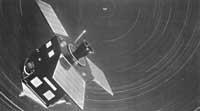Hipparchus Success
The European Hipparchus telescope was launched into space on 9 August 1989. It had to reach a circular orbit at 36,000 kilometers, but due to engine failure it has an orbit of 500 km/36,000 km. This failure of Usategi discouraged scientists at first, but working constantly to create a worldwide satellite data collection network, they track data night and day.
Over time, astronomers are increasingly satisfied with the work done by Hipparchus. Every day he sends his data for seventeen hours and has already determined the position of ten million stars. The European Space Agency has announced the publication of the first catalogue with 6,000 stars. Bear in mind that the data in the catalogue will be at least 50 times more accurate than terrestrial observations.

On the other hand, the team of Jean Kovalevsky of the observatory of the French Riviera has discovered hundreds of new double stars. In addition, the lighting level of more than 30,000 stars has been measured.
In view of Hipparchus' success, scientists expect him to meet his goal: to measure the movement, parallax and magnitude of 114,488 stars selected by astronomers. If it reaches the target, the sphere analyzed directly in the Universe will extend from 46 light years to 260 light years.
The accuracy of this database is fundamental, since it is then extrapolated at a greater distance, but according to Catherine Turon, who operates at the Meudon observatory, the satellite still has to spend two and a half years sending data to be able to integrate them in positions and give distances. The problem is that the satellite remains all that time. Passing through the Van Allen belt, solar panels erode and consume more gas than expected. However, after a year and a half of operation, there are reasons to be hopeful.





